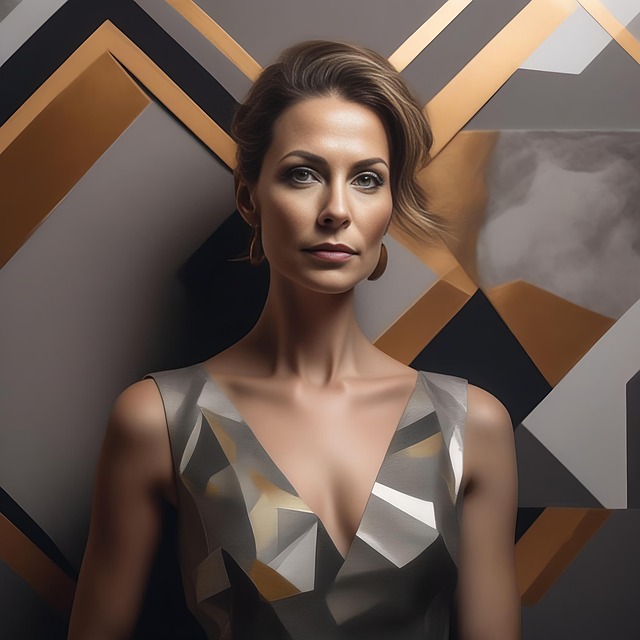# The Aesthetics of Algorithms: How AI is Redefining Artistic Expression in the Digital Age
## The Intersection of Art and Technology
In recent years, the fusion of artificial intelligence (AI) and art has sparked a revolutionary dialogue about creativity and expression. Historically, art has been a domain reserved for human ingenuity, characterized by emotional depth and personal experience. However, the advent of AI technologies has begun to challenge this notion, presenting a new frontier where algorithms can produce visually stunning works that rival traditional artistic methods. As AI tools become more sophisticated, they not only generate images but also influence the creative processes of human artists, leading to a redefinition of what it means to create.
Emerging technologies such as machine learning and neural networks are at the forefront of this transformation. By analyzing vast datasets of existing artworks, AI systems can learn patterns, styles, and techniques, enabling them to create original pieces that reflect a blend of influences. This capability raises profound questions about authorship and originality, as the line between human and machine-generated art becomes increasingly blurred. The dialogue surrounding these questions is essential for understanding the broader implications of AI in the art world and its potential to democratize artistic expression.
Moreover, the role of the artist is evolving in this digital landscape. Rather than being the sole creator, artists are now becoming curators of AI-generated content, guiding algorithms to produce works that resonate with their vision. This collaborative approach not only expands the boundaries of creativity but also invites a diverse range of voices into the artistic conversation. As a result, the aesthetics of algorithms are not just reshaping the output of art but also redefining the very process of creation itself.
## AI as a Creative Collaborator
The concept of AI as a collaborator rather than a competitor is gaining traction among artists and technologists alike. Many contemporary artists are embracing AI tools to augment their creative processes, using them to explore new ideas and techniques that may not have been possible through traditional methods. For instance, generative art—where algorithms create unique visual content—has become a popular medium, allowing artists to experiment with forms, colors, and compositions that push the boundaries of their imagination.
One notable example is the use of Generative Adversarial Networks (GANs), a type of AI that can generate images by learning from existing datasets. Artists have employed GANs to create everything from abstract paintings to hyper-realistic portraits, showcasing the potential of AI to produce aesthetically pleasing works. The surprising outcomes of these collaborations often challenge conventional artistic norms, leading to a rich exploration of what constitutes beauty and meaning in art.
Furthermore, AI can facilitate a more interactive artistic experience. Through technologies such as augmented reality (AR) and virtual reality (VR), artists can create immersive environments that engage viewers in novel ways. AI algorithms can adapt these environments in real-time based on audience reactions, making each experience unique. This interactivity not only redefines the relationship between the artist and the audience but also invites deeper emotional connections with the artwork.
## The Ethical Implications of AI in Art
While the integration of AI into the artistic realm offers exciting possibilities, it also raises significant ethical questions that must be addressed. One of the primary concerns revolves around the issue of copyright and ownership. As AI systems generate original works based on existing styles and techniques, determining the rightful owner of these creations becomes increasingly complex. Should the credit go to the programmer, the artist who guided the AI, or the AI itself? This ambiguity poses challenges for artists seeking to protect their intellectual property in an age where algorithms can easily replicate and remix existing works.
Additionally, the potential for AI to perpetuate biases present in its training data cannot be overlooked. If an AI is trained on a dataset that lacks diversity, the resulting artwork may reflect and reinforce existing stereotypes, ultimately limiting the scope of artistic expression. Artists and technologists must remain vigilant in addressing these biases to ensure that AI serves as a tool for inclusivity rather than exclusion.
Moreover, the rapid advancement of AI technologies raises concerns about the future of human creativity. As machines become increasingly capable of producing art, some fear that the value of human-made art may diminish. However, this perspective overlooks the unique qualities that human artists bring to their work—empathy, intuition, and personal experience. Rather than replacing human creativity, AI can enhance and expand it, encouraging artists to explore new avenues of expression.
## Conclusion: A New Era of Artistic Expression
Ultimately, the aesthetics of algorithms represent a significant shift in the landscape of artistic expression. As AI continues to evolve, it offers artists unprecedented opportunities to collaborate, innovate, and redefine their creative practices. By embracing these technologies, artists can push the boundaries of their work, exploring new forms and styles that challenge traditional notions of beauty and meaning.
The ongoing dialogue surrounding AI and art will undoubtedly shape the future of creativity in profound ways. As artists, technologists, and audiences engage with these developments, they will contribute to a richer understanding of what art can be in the digital age. The intersection of AI and artistic expression invites us to reconsider our definitions of creativity, originality, and the role of technology in shaping our cultural landscape. As we navigate this new era, one thing is certain: the aesthetics of algorithms will continue to inspire, provoke, and transform the world of art as we know it.

